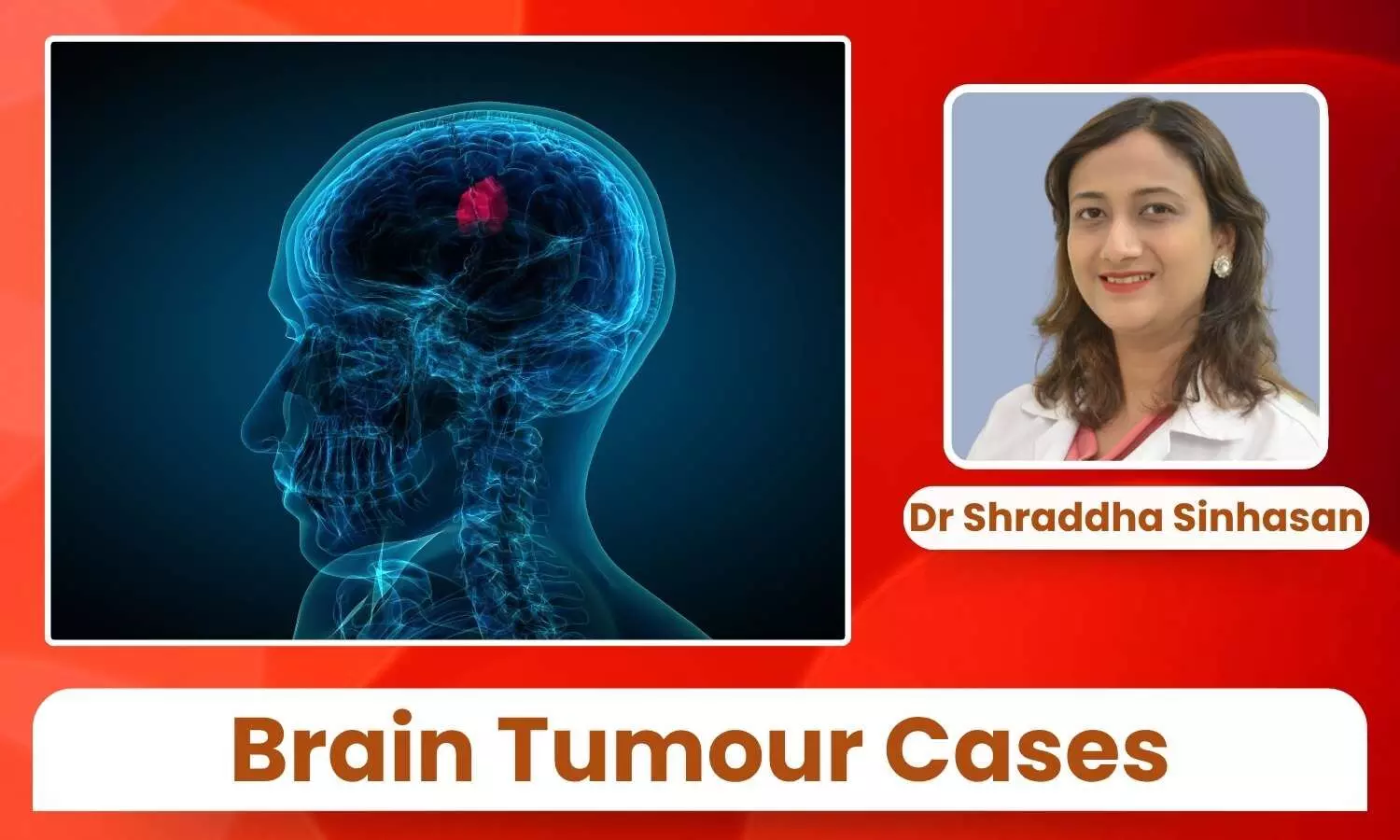Surge in Brain Tumour Cases Since 1990: Symptoms, Causes and Latest Treatments - Dr Shraddha Sinhasan

Incidence of brain tumours has significantly increased in the last 3 decades by a whooping 94.35% increase from 1990 to 2019. The incidence was highest in the age group of 65-74 years.
The reasons, though not fully understood, have been attributed to increased environmental hazards, genetic factors, lifestyle choices and increased detection by newer modalities.
Brain tumour is a result of growth of cells within the brain parenchyma or adjacent to it. These can be either primary (begins to grow within the brain) or secondary/ metastatic (spread from other parts of the body).
Primary brain tumours are named after the brain cells that they arise from, for example, gliomas arise from glial cells, meningiomas from meninges/membranes covering the brain or spinal cord, pituitary tumours from pituitary gland, schwannomas from intracranial nerves, etc.
The primary tumours can be benign (non-cancerous) or malignant (cancerous). There are over 150 types of brain tumours identified. About 1/3rd of the tumours are malignant / cancerous. These include anaplastic astrocytoma, glioblastoma multiformis, medulloblastoma, etc.
These tumours grow significantly faster than the benign ones and rapidly destroy the brain cells. Meningiomas, pituitary adenomas, schwannomas, etc along to the benign/non-cancerous every.
Secondary tumours, that form in other parts of the body before spreading to the brain, are mostly malignant (cancerous). The common types that spread to the brain include cancers of breast, colon, kidney, lung and melanoma.
A more scientific way of categorizing brain tumours is by WHO classification which divides the tumours on aggressiveness and likelihood of growth and spread, dividing into 4 grades; I (least aggressive) to IV (most aggressive).
Brain tumours commonly present with headaches. Headaches are often worse in the mornings and associated with nausea and vomiting.
Other important symptoms include memory loss, seizures, dizziness, instability, speech problems, vision problems, decreased hearing or weakness on one side of the body.
The symptoms also depend on location of the tumour within the brain, for example, frontal lobe tumours generally present with behavioural or emotional changes.
The suspicion of brain tumour arises when physicians obtain patient history and perform detailed clinical examination. Tests like audiometry, blood/ urine hormone levels, visual field acuity and lumbar puncture may be aid in diagnosis.
However, appropriate diagnosis often requires imaging tests like CT and MRI, which help in localizing and characterizing them.
Recent advances in MRI can have improved diagnosis of brain tumour, planning of surgery, postoperative evaluation as well as monitoring treatment response. MR spectroscopy and perfusion are useful in grading and characterizing tumours, evaluating disease progression and treatment response.
DTI (diffusion tensor imaging) helps in diagnosis and presurgical planning by evaluating white matter tracts.
Functional (BOLD) imaging helps in mapping eloquent areas of brain prior to surgery to preserve good brain function.
3D ASL (arterial spin labelling) provides non-contrast colour coded perfusion maps for characterizing and grading tumours. Similarly, 3D APT (amide Proton transfer) helps differentiate between low-grade and high grade gliomas.
CT / MR neuronavigation guided biopsies provide tissue sampling for accurate histopathological diagnosis and grading.
Unfortunately, there is no way to prevent brain tumours. As these occur due to changes in DNA of cells, single most important risk factor is exposure to ionizing radiation. This includes radiation therapy used for cancer treatment and atomic bombs.
There is no convincing evidence that low level radiation from cell phones and radio waves and cause brain tumours.
However, due to lack of adequate and long-term studies, it is advisable to use speaker mode, corded hands-free device, decreased call duration and cell phones with lower SAR (Specific Absorption Rate).
Usage of cell phones by children <14 yrs is best avoided. There is no health risk due to the electromagnetic fields used in mobile communication if the applicable limits and maximum levels are adhered to.
VitD deficiency during gestational development may be particularly relevant to childhood brain tumour risk.
Surgery remains the treatment of choice for the majority of brain tumours. Image guided surgical technologies (like gamma knife), tumour fluorescence, intraoperative CT/MRI and functional brain imaging have significantly improved surgical precision, adequate tumour excision and improved patient outcomes by decreasing complications.
Survival rate post treatment of brain tumour largely depends on type of tumour, age, race and overall health. However, early detection, accurate diagnosis, optimal treatment and post-treatment neuro-rehabilitation lead to significantly decreased morbidity and mortality and gives good quality of life.


